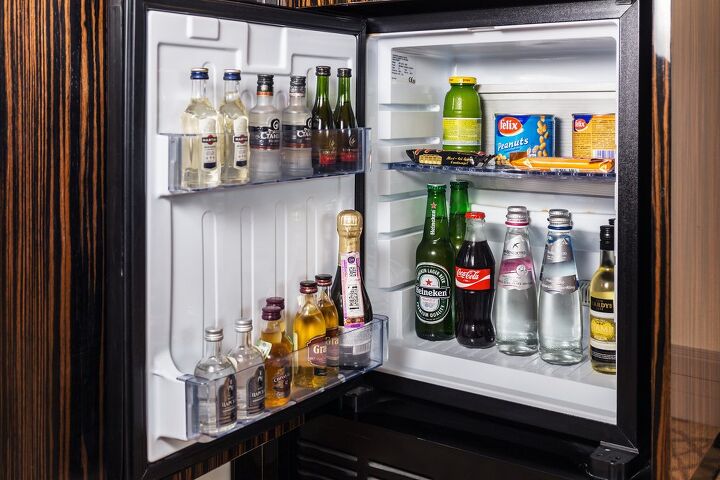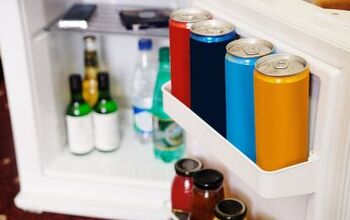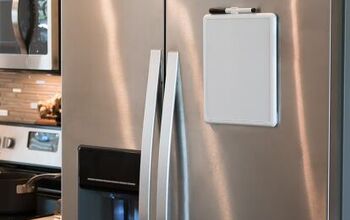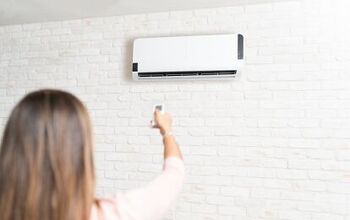Can You Put A Mini Fridge On Carpet? (Find Out Now!)

A mini-fridge can be a convenience in an upstairs bedroom or a necessity in a dorm. These miniature refrigerators often tuck into our little comfort spaces and our comfort spaces often are covered in soft, luxurious carpet. So, is it okay to put our mini-fridge on our carpeted floor, or do we need to find another area to keep our perishable items?
While many regular-sized refrigerators have their condenser coils at the back, most mini-fridges have their condenser coils at the bottom. By placing a mini-fridge with bottom coils directly on your carpet, you run the risk of overheating your fridge, or in a worst-case scenario, starting a fire. You can choose to place your fridge on a smooth, heat-resistant surface such as tile, linoleum, or wood, instead.
We’ll give you some tips on the best placement of your mini-fridge, and how you can help it do its job of keeping your goods cold.
Do You Need Appliance Installation or Replacement?
Get free, zero-commitment quotes from pro contractors near you.

Why You Shouldn’t Put a Mini Fridge on Carpet
Your mini fridge needs air circulation
To run properly, a refrigerator needs air circulation. A fridge should not hug your walls (or be covered in cereal boxes!). Many experts recommend leaving 1-2 inches of space between your fridge and your walls or cabinets. This leaves room for air to circulate and keeps your refrigerator from overheating.
If you put your mini-fridge directly on carpet, you are essentially blocking your unit from much-needed air circulation. Especially if your unit has its condenser coils at the bottom, this can be a recipe for disaster!
Carpet can be damaged by heat and water
Another reason not to put your mini-fridge directly on the carpet is that it can damage your floor. The day-to-day combination of moisture and heat from your fridge can cause mildew or mold to start growing in your carpet. This can damage the area directly under your unit and may spread from there. Once mold starts, it can be a hassle to get rid of!
Also, if your fridge decides to meltdown, and leaves a puddle behind, you will be happy it is not sitting directly on your carpet.
You may be thinking, “But the only place my mini-fridge can go is in a carpeted area!” And, we get it. Sometimes you have no other option. So, we’ll let you in on some tips to place your fridge where you need it (without risking burning your house to the ground!)
So, Where Should I Put My Mini Fridge?
Choose a smooth surface that allows for air circulation
If you live in a fully carpeted flat or a carpeted dorm, you may have no other option but to put your fridge in a carpeted area. If this is the case, you place a piece of vinyl, tile, or linoleum under your mini-fridge… even a solid wooden board should work! This helps air to circulate around your unit and provides an extra layer of protection in case of moisture.
Choose a mini-fridge with condenser coils at the back
If you know your fridge will be going in a carpeted area, you can look for a mini-fridge with the condenser coils on the back of the unit. While this type of mini fridge can be a little more difficult to find, they do exist. Still, it is advisable to put a barrier between your unit and your carpet to prevent water damage.
Prevent Your Mini Fridge from Overheating
Any appliance that runs on electricity can run the risk of overheating. Here are a few practical tips to keep your mini-fridge from overworking and help it do its job of keeping your perishables cold.
Keep items off the top of your fridge.
While we know we should keep the condenser coil area free, you should also keep the top clear of cereal boxes or other items. Heat escapes from the top of your machine, which can cause any food items on top of your fridge to deteriorate faster. Your fridge also needs 1-2 inches of space at the top for proper air circulation.
The 3/4 Full Rule
Aim to keep your fridge ¾ full. If you overstuff your fridge, it will block air circulation on the inside and your unit will have to work harder. If your fridge stays about ¾ full, cold food will help keep other food cold and make your fridge’s job easier.
Keep Your Fridge Away from Heat
Don’t place your fridge in direct sunlight or next to a stove.
Plug Your Mini-Fridge into a Wall Outlet
Never use an extension cord to plug in your refrigerator. This can cause a short or even an electrical fire. Large appliances like refrigerators should be plugged directly into a wall outlet.
Keep Your Fridge’s Coils Clean
Regularly cleaning your mini fridge’s coils will give you a more efficient unit!
How to Keep Your Mini Fridge’s Condenser Coils Clean
Dirty coils can cause your fridge to overheat and you could end up paying more on your electric bill. Cleaning your fridge’s coils regularly can extend its life and, luckily, cleaning them is not that hard to do!
Here are some simple steps to clean your mini fridge’s coils:
Step 1: Unplug your mini-fridge.
Step 2: Locate your fridge’s condenser coils. These look like a wavy metal tube winding on a grid pattern at the back of the fridge. If your coils are underneath the unit, you may have to remove the base grille to get to them.
Step 3: Use a refrigerator condenser cleaning coil brush to clean the coils. If you don’t have one on hand, a soft, clean paintbrush or a bottle brush should work, as well.
Step 4: Vacuum up dust and debris.
If your coils are difficult to access, you can always hire an expert to get the job done. According to fixr.com, maintenance call for this job usually runs from $50 to $100.
Related Questions
Does a mini fridge use a lot of electricity?
How much or little electricity your mini-fridge will use will depend on how energy efficient your unit is. That being said, mini-fridges use much less electricity than an average-sized unit. Most mini fridges will use between 55 watts and 85 watts of electricity.
Which setting is cooler on a fridge, 1 or 5?
The numbers on your fridge’s dial correlate to its refrigerant power. This means that the higher number is, the colder your fridge will be. Number 5 will give you the coldest fridge, while 1 will be the least cold setting.
How Cold Should I Keep My Fridge?
The FDA recommends keeping your refrigerator set at or below 40° F (4° C) and your freezer at 0° F (-18° C). To make sure your refrigerator is maintaining the proper temperature, you can buy an inexpensive appliance thermometer to check the temperature.
Do You Need Appliance Installation or Replacement?
Get free, zero-commitment quotes from pro contractors near you.

Summing It Up
Placing your mini-fridge on carpet can cause moisture damage, may cause your machine to overheat, and can create a fire hazard. If you have no other option but to put your mini-fridge in a carpeted area, you can choose another heat-resistant solid barrier to put under your unit to protect your floor and your fridge. We hope these tips will help you find the best spot for your mini-fridge!
Related Guide

Alex Praytor is a native Texan who got her degree in English Literature and decided to travel the globe. She finds the architecture and design of homes across cultures fascinating. In her spare time, she visits coffee shops with her family and creates projects for their own home. Alex enjoys sharing tips on how to keep repairs up to date while turning a house into a home.
More by Alex Praytor



























